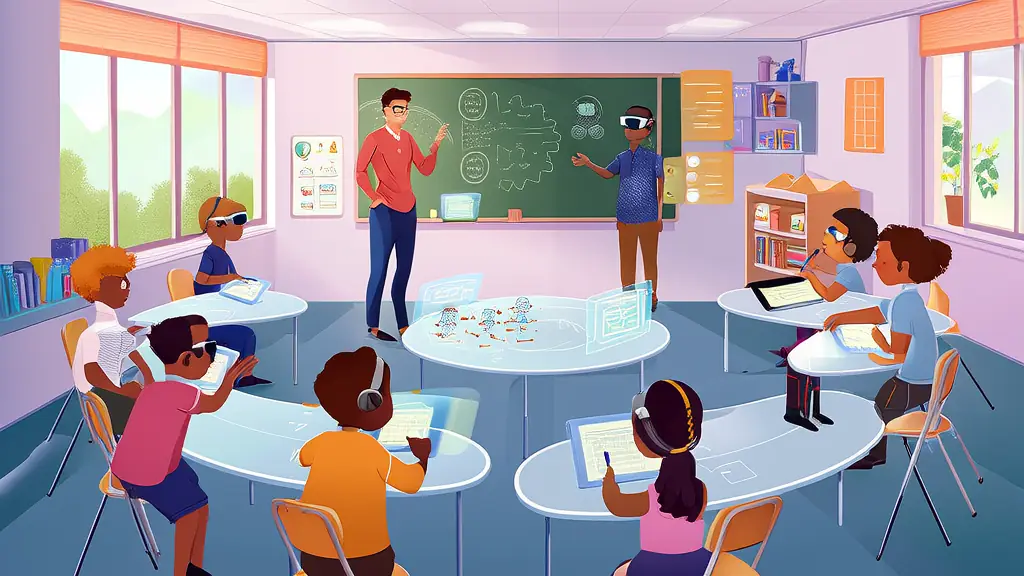
Empowering the Future: Navigating K-12 Education in 2025
Welcome to our exploration of the dynamic world of K-12 education as we stand in September 2025. As parents and educators, staying informed about the latest trends, methodologies, and insights is crucial for nurturing the next generation. In this blog post, we will delve into cutting-edge teaching methods, child development research, technological advancements, and practical tips that can make a significant difference in the educational journey. Let's dive in!
The Evolution of Teaching Methodologies
Traditional teaching models are giving way to more interactive and student-centered approaches. One of the most effective methodologies gaining traction is Project-Based Learning (PBL). PBL encourages students to engage in real-world projects that require critical thinking, collaboration, and problem-solving. For example, a high school biology class might work on a project to design a sustainable garden, integrating concepts from botany, ecology, and environmental science.
Another notable approach is Flipped Learning, where students watch video lectures or read materials at home and use class time for discussions, activities, and hands-on learning. This method has been shown to improve comprehension and retention by allowing students to apply what they've learned in a supportive, interactive environment.
Insights from Child Development Research
Recent research in child development highlights the importance of social-emotional learning (SEL) in K-12 education. SEL programs help students develop self-awareness, self-management, social awareness, relationship skills, and responsible decision-making. Schools that integrate SEL into their curriculum have seen improvements in academic performance, reduced behavioral issues, and increased student well-being.
Additionally, studies show that play-based learning is essential for young children, particularly in the early years. Play fosters creativity, curiosity, and a love for learning. Educators can incorporate play-based activities into their lessons, such as using blocks to teach math concepts or role-playing to explore historical events.
Educational Technology Trends
Technology continues to transform the educational landscape, offering new tools and resources for both teachers and students. Artificial Intelligence (AI) is one of the most promising developments, with AI-powered adaptive learning platforms that tailor content and pacing to individual student needs. These platforms can provide personalized feedback and support, helping students to learn more effectively.
Virtual Reality (VR) and Augmented Reality (AR) are also making waves in the classroom. VR can transport students to different times and places, such as ancient Rome or the International Space Station, while AR can bring textbooks to life with interactive 3D models. These technologies not only enhance engagement but also deepen understanding and retention.
Practical Tips for Parents and Teachers
For parents, staying involved in your child's education is key. Here are some actionable tips:
- Communicate regularly with your child's teachers to stay informed about their progress and any areas that need extra support.
- Create a dedicated study space at home that is quiet, organized, and free from distractions.
- Encourage a growth mindset by praising effort and perseverance rather than just outcomes. Help your child see challenges as opportunities for growth.
For teachers, here are some strategies to enhance your teaching practice:
- Incorporate diverse teaching methods to cater to different learning styles and keep students engaged.
- Use technology thoughtfully to supplement and enhance your lessons, but ensure it does not replace meaningful human interaction.
- Foster a positive classroom culture that values respect, empathy, and collaboration. Encourage open communication and a sense of community among students.
Success Stories and Case Studies
One inspiring success story comes from Lincoln Elementary School, which implemented a comprehensive SEL program. Over the course of two years, the school saw a 30% decrease in disciplinary incidents and a 25% increase in overall academic performance. Students reported feeling more connected to their peers and more confident in their abilities.
Another case study involves the integration of VR in a middle school science class. Students used VR headsets to explore the human body, leading to a 40% improvement in test scores and a 50% increase in student engagement. The immersive experience made complex concepts more accessible and memorable.
Conclusion
The landscape of K-12 education is constantly evolving, and staying informed about the latest methodologies, research, and technologies is essential for both parents and educators. By embracing innovative teaching approaches, prioritizing social-emotional learning, and leveraging educational technology, we can create a more engaging, effective, and supportive learning environment for all students. Let's continue to work together to empower the future generations and ensure they are well-prepared for the challenges and opportunities ahead.
Join the conversation and share your experiences and insights in the comments below. Together, we can make a difference in the lives of our children and students.